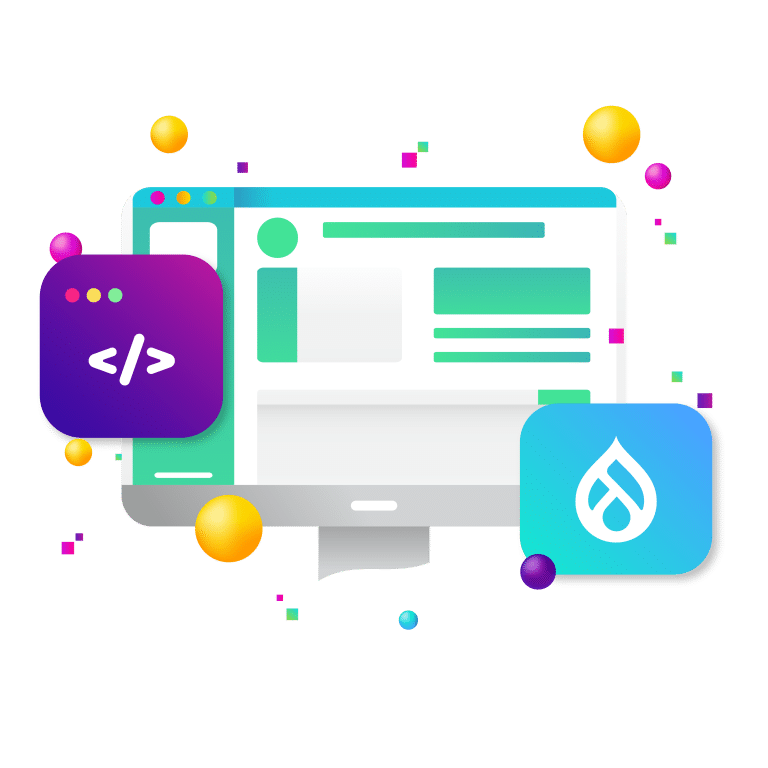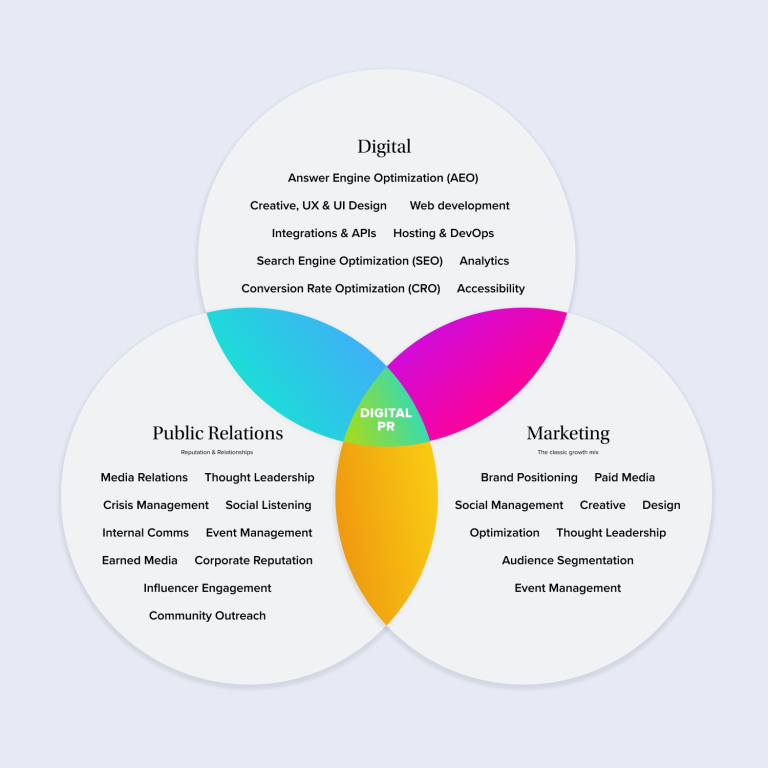
Audiences have endless choices, fleeting attention spans, and finely tuned BS detectors. So how do brands make people care? The answer isn’t more content. It’s better content—specifically, content grounded in a compelling narrative. Brand storytelling has emerged as the most powerful strategy for building trust, evoking emotion, and turning casual browsers into lifelong advocates.
At New Target, we work with nonprofits, e-commerce brands, associations, and government agencies to bring brand stories to life across websites, email campaigns, social platforms, and earned media. In this article, we explore how to craft a compelling brand story and adapt it effectively across digital channels—owned and earned—so it connects deeply and drives measurable engagement.
What Is a Brand Story?
Brand storytelling is more than messaging; it’s the art of communicating your brand’s essence through narrative structure. Unlike traditional marketing that focuses on products, brand storytelling focuses on purpose, people, and impact. It aims to create a human connection.
The Psychological Pull of Story
Stories are fundamental to human communication. Neuroscience shows that stories activate sensory and emotional parts of the brain, increasing memory retention and empathy. When brands communicate in story form, audiences are more likely to relate, remember, and respond.
Research from Harvard Business School reveals that emotional engagement—often triggered by stories—can be a stronger driver of consumer loyalty than customer satisfaction. In short, facts tell, but stories sell.
The Competitive Edge
In a commoditized market, storytelling creates differentiation. Consumers often can’t tell one solution from another on features alone, but they remember how a brand made them feel. Patagonia isn’t just selling jackets; it’s selling activism. Nike doesn’t sell sneakers; it sells aspiration. These brands win because their stories are consistent, emotionally compelling, and channel-optimized.
Storytelling also builds trust. In an era of misinformation and ad fatigue, trust is a scarce commodity. Brands that communicate authentically and consistently across platforms foster familiarity and credibility over time.
Understanding the Elements of a Strong Brand Story
Telling a compelling brand story isn’t about manufacturing drama or scripting fiction—it’s about unearthing your brand’s authentic identity and expressing it with emotional resonance and strategic focus. A strong brand story is not just about what your organization does; it’s about why it matters, who it serves, and how it transforms lives.
Purpose and Origin: Defining Your “Why”
At the heart of every great brand story is a clear and compelling purpose. Why was your organization founded? What injustice, inefficiency, or unmet need sparked its creation? More than dates and logistics, this part of your story reveals the mission-level motivation—the passion that still drives you today.
Founders’ stories often offer this grounding. Was your brand born out of frustration, inspiration, or necessity? Was it a kitchen-table experiment or a garage start-up that grew into a movement?
Example: Warby Parker didn’t just start because glasses were expensive. They launched because the eyewear industry was monopolized and underserved. Their mission was—and still is—to provide stylish, affordable eyewear while making vision care accessible. That origin story shapes everything from their product development to their philanthropic “Buy a Pair, Give a Pair” program. It’s a story of access, empowerment, and challenge to the status quo.
Tip: Go beyond “we wanted to start a company”—dig into what was broken in the world and how you set out to fix it.
Audience as Protagonist: Shifting the Spotlight
In effective brand storytelling, your brand is not the hero—your customer is. They are the protagonist in their own narrative, facing a challenge, seeking a solution, and pursuing a goal. Your role? You’re the trusted mentor, the guide who equips them with what they need to succeed.
This framework, often referred to as the “hero’s journey,” creates a stronger emotional bond. It also transforms your messaging from self-promotional to service-oriented.
Example: Slack doesn’t talk about messaging platforms. Their story is about empowered teams. By spotlighting how teams overcome miscommunication and chaos with clarity and collaboration, Slack positions itself as the tool that helps the hero (the user) achieve excellence.
Tip: Frame your products and services as tools your audience uses on their own journey. Show how you support, not overshadow, their transformation.
Conflict and Stakes: Introducing the Tension
No compelling story is without struggle. Conflict gives your story urgency, relevance, and emotional power. In branding, conflict comes in the form of unmet needs, pain points, or broken systems that your audience confronts every day.
It’s essential to clearly define:
- What problem does your audience face?
- What are the consequences of inaction?
- Why does it matter now?
Example: Dove’s “Real Beauty” campaign identified a powerful conflict—mainstream beauty standards were harming self-esteem, particularly among women and girls. The brand stepped in not just with products, but with a cause. They reframed the narrative, making Dove a champion for authenticity and self-worth.
Tip: Your conflict doesn’t have to be world-shaking. It just has to matter deeply to your audience. Frame the stakes in human, emotional terms, not just technical ones.
Resolution and Transformation: Showing the Journey’s Impact
This is the moment where your audience’s story changes—where your brand enables their transformation. How does their life, work, or worldview improve because of you? What does success look like, and how can you prove it?
Effective resolution stories include:
- Before-and-after comparisons
- Client testimonials with specific outcomes
- Visual case studies
- Data points that underscore success
Example: Headspace doesn’t just say “we help people meditate.” Their brand story showcases users who went from stress and insomnia to clarity and calm. These transformations are backed by user stories, scientific research, and visual storytelling.
Tip: Emphasize real results. Give your audience something they can aspire to, something that shows the value of trusting your brand as part of their personal or professional evolution.
Consistent Tone and Emotional Anchors: Reinforcing Identity
The tone of your story—the way it sounds and feels—is just as important as what it says. Is your brand friendly, edgy, confident, nurturing, or authoritative? This emotional signature should be reflected in everything from your website copy to your social media captions to your customer service scripts.
Emotional consistency builds trust and recognition. It makes your brand feel like a coherent personality, not a shifting mask.
Example: Mailchimp has a quirky, confident, and slightly irreverent tone across all its channels. Whether you’re reading their blog, getting onboarding emails, or seeing ads, the brand personality is unmistakable—and it enhances user affinity.
Tip: Identify 3–5 emotional attributes your brand wants to convey (e.g., trustworthy, ambitious, warm). Then audit all brand communications for alignment. If your brand sounds serious on the homepage but flippant on social media, you’re creating dissonance.
Translating Your Brand Story Across Digital Channels
A unified brand narrative is the foundation. But each channel has its own format, audience expectations, and content limitations. Let’s break down how to adapt your story across core digital touchpoints.
Website: The Narrative Epicenter
Your website is the central hub of your digital brand presence. Every page should reflect and reinforce your story.
- Homepage: Introduce the emotional promise of your brand. Use concise copy, visual storytelling, and a strong CTA.
- About Page: This is your origin story playground. Humanize your leadership team, show your evolution, and reinforce your mission.
- Service Pages: Frame offerings in terms of audience outcomes and benefits—not just features.
- Blog: Dive deeper into sub-stories: customer success, innovation, employee perspectives, behind-the-scenes looks.
- Calls-to-Action: Make them story-aware. “Join our mission” is more powerful than “Sign up now.”
Tip: Use layout and design to mirror narrative flow. For instance, scroll-based storytelling or parallax elements can help simulate a journey.
Social Media: Bite-Sized Authenticity
Social is where your story evolves and where dialogue happens. Every post is a chance to reinforce your values and voice.
Best Practices for Storytelling on Social:
- Reels/TikTok: Use short-form video to highlight behind-the-scenes moments, founder voice, or customer stories.
- Instagram Carousels: Tell multi-slide narratives around impact, transformation, or how-to journeys.
- LinkedIn: Ideal for sharing mission-driven updates, industry POVs, and culture stories.
- Twitter/X: Boil down your big ideas into punchy one-liners or threads.
Tip: Use a content calendar tied to storytelling themes: e.g., “Transformation Tuesdays” or “Founder Fridays.”
Email Marketing: Personalized Narratives That Convert
Emails should extend your story while speaking to audience segments personally. Use behavioral data to tailor the content journey.
Key Email Touchpoints:
- Welcome Series: Tell your founding story, why your mission matters, and what the reader can expect.
- Customer Onboarding: Make new customers feel like heroes. Reinforce how your solution helps them win.
- Lifecycle Campaigns: Triggered stories based on user behavior: abandoned cart, donation anniversary, subscription renewal.
Tip: Experiment with storytelling formats: video snippets, animated GIFs, or handwritten-style founder notes.
Earned Media & Influencers: Amplifying the Narrative
When your story is shared by others, it gains legitimacy. Invest in assets and strategies that help third parties tell your story accurately and emotionally.
- PR Kits: Include bios, quotes, story backgrounders, and approved imagery.
- Influencer Collaborations: Find partners whose audience and values align with yours. Let them tell their authentic version of your story.
- Testimonials and Reviews: Encourage customers to post user-generated content (UGC) that reflects their journey with your brand.
Tip: Track referral traffic and sentiment from earned media placements to see how well your story is resonating.
Making the Story Strategic: Tying Narrative to Business Goals
A compelling brand story can spark interest, stir emotion, and build connection—but without strategic alignment, it’s just noise. For storytelling to drive real business value, it must be crafted and deployed with purpose, tightly linked to measurable goals across your digital ecosystem. Strategic storytelling ensures that content doesn’t just inspire, but performs.
Define Success Metrics by Channel
Storytelling needs to be actionable—and that means quantifiable. Each platform you use offers unique opportunities for storytelling, and each should have its own success metrics. By measuring performance across channels, you can see not only which stories are resonating but how well they’re supporting your business objectives.
Web: Conversion Rates on Storytelling-Rich Landing Pages
A well-told story on a landing page should increase user engagement and conversion. Pages that feature founder narratives, customer journeys, or brand mission stories can reduce bounce rates and increase time on site. For e-commerce, look at metrics like product add-to-cart rate and checkout conversions tied to storytelling formats.
Example: A nonprofit might test a campaign landing page with a donor story about why they give—and compare donation conversion rates to a version without it.
Social Media: Engagement Rates, Follower Growth, Share Velocity
Social storytelling often performs best when it’s authentic, emotional, and easily shareable. The success of social content lies not just in likes but in deeper forms of engagement: comments, saves, and shares. Share velocity—how quickly and broadly a post spreads—is a particularly strong indicator of resonance.
Example: A food brand’s behind-the-scenes story about its sourcing process may generate more reposts and comments than polished product shots alone.
Email: Open Rates, Click-Through Rates, Revenue per Campaign
Emails that integrate narrative—like spotlighting a customer’s journey or telling a “letter from the founder” story—often outperform transactional messages. Look beyond opens: measure how well storytelling drives click-throughs to key pages and ultimately leads to conversion or revenue.
Example: A welcome series that begins with a short brand origin story can dramatically increase subscriber lifetime value versus a generic product showcase.
Earned Media: Media Mentions, Influencer Impressions, Share of Voice
Storytelling can extend beyond owned media when it’s strategic. PR campaigns and influencer partnerships built around strong narratives (like a compelling cause or founder’s journey) are more likely to earn coverage and social amplification. Key performance indicators here include the number and quality of media mentions, reach of influencer shares, and share of voice in your competitive landscape.
Example: A tech company launching a new product might anchor its media outreach in a user transformation story—resulting in features across industry blogs and news outlets.
Align Storytelling with Funnel Stages
Your audience’s needs and mindset vary across the marketing funnel. Telling the right story at the right time can move prospects from awareness to action. Strategic alignment ensures your narrative scaffolds a buyer’s journey—not just entertains them.
Top-of-Funnel: Focus on Purpose and Human Interest (Brand Awareness)
At this stage, your audience is discovering you for the first time. The goal is to spark curiosity and build emotional affinity. Lead with aspirational, human-centered stories—think brand origin tales, community impact narratives, or purpose-driven campaigns. These stories don’t sell directly—they connect.
Example: A mission-driven DTC skincare brand might launch a video campaign about sustainability in its supply chain, aiming to educate and inspire rather than promote a specific product.
Mid-Funnel: Use Testimonials and Case Studies (Consideration)
Once prospects know who you are, they want proof that you’re worth their attention. Storytelling here should reassure, validate, and clarify value. Customer testimonials, behind-the-scenes walkthroughs, and detailed case studies help them see the real-world impact of your product or service.
Example: A SaaS company might release a mini-documentary showing how a customer reduced operational costs using its platform—reinforcing value through lived experience.
Bottom-of-Funnel: Reinforce Transformation and Proof Points (Conversion)
At the decision stage, storytelling should push prospects over the line. This is where stories of transformation and ROI really shine. Highlight before-and-after narratives, quantify results, and use persuasive, trust-building content like expert endorsements or customer success spotlights. Reassurance is key.
Example: A nonprofit appealing for donations might share a story showing exactly how a single $50 donation changed a family’s life—closing the loop emotionally and logistically.
By integrating storytelling strategically—across platforms and across the funnel—you ensure that your brand narrative is not just expressive but effective. It becomes a powerful business tool: one that builds emotional connection and drives measurable performance.
Avoiding Common Pitfalls in Brand Storytelling
Even the best stories can fall flat when mishandled. Watch for these mistakes:
- Inconsistency Across Channels: Conflicting voices, design, or values confuse users. Create a story playbook.
- Overly Promotional Content: Constant selling undermines authenticity. Use storytelling to build trust first.
- Neglecting Audience Feedback: Storytelling is a dialogue. Monitor comments, surveys, and sentiment.
- Tone Mismatch: Be careful when adapting tone for platforms—a quirky TikTok persona may not work on LinkedIn.
Let New Target Help You Tell Stories That Stick
In the digital world, your story isn’t a side project—it’s your brand. It’s how you differentiate, connect, and grow. At New Target, we specialize in helping organizations craft and execute powerful brand stories across every platform that matters.
From immersive websites and emotionally engaging email campaigns to data-driven social strategies and influencer collaborations, we help bring your narrative to life—strategically, creatively, and measurably.
Ready to transform your brand into a story worth sharing? Let’s chat to get started.



